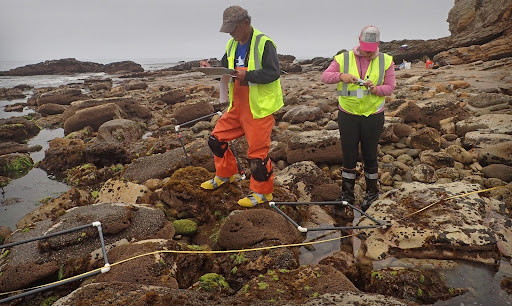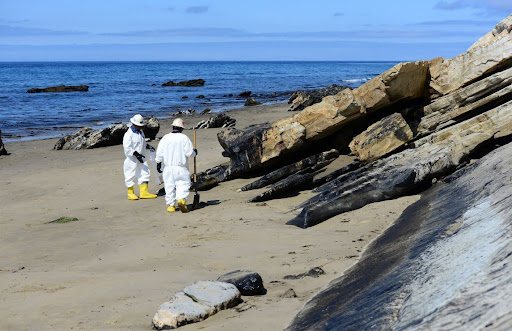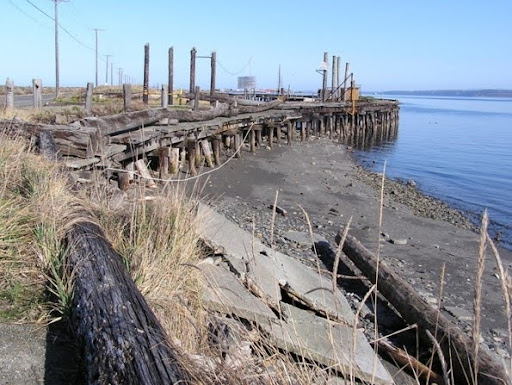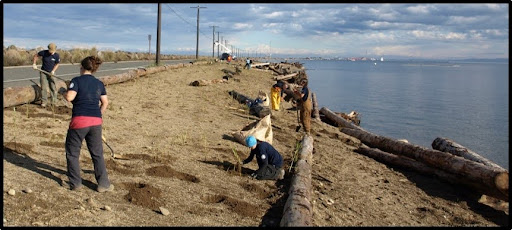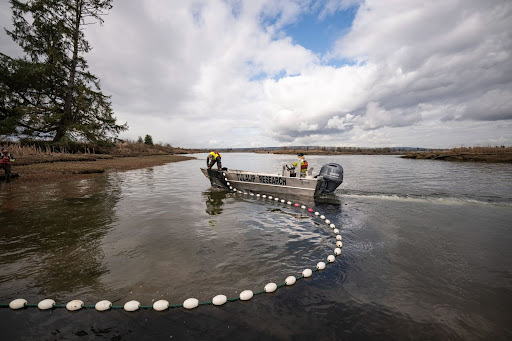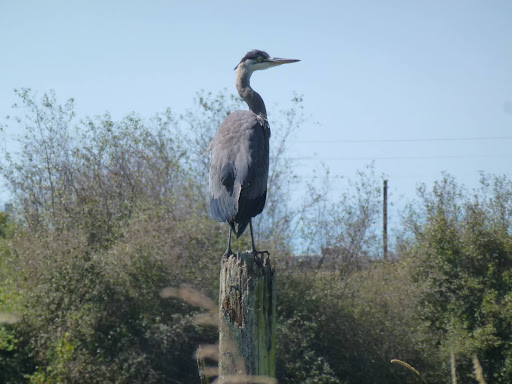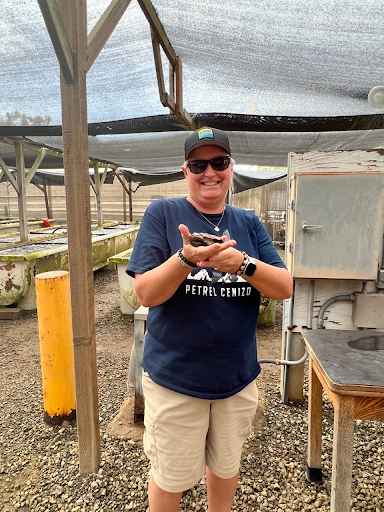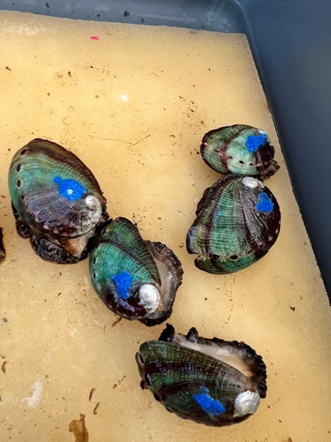NOAA is a Trustee for Public Natural Resources
NOAA invests in the environment and communities. We use our scientific and technical expertise and funding from pollution settlements to restore habitats impacted by oil spills and hazardous waste releases. In turn, restoration benefits communities that rely on the resources and services that habitats provide. Restoration comes in many forms and is designed to help the environment recover and restore recreational opportunities like fishing and boating.
NOAA works on assessing and restoring natural resources at many hazardous waste sites and oil spills in the region, which can benefit local disadvantaged and disproportionately impacted communities.
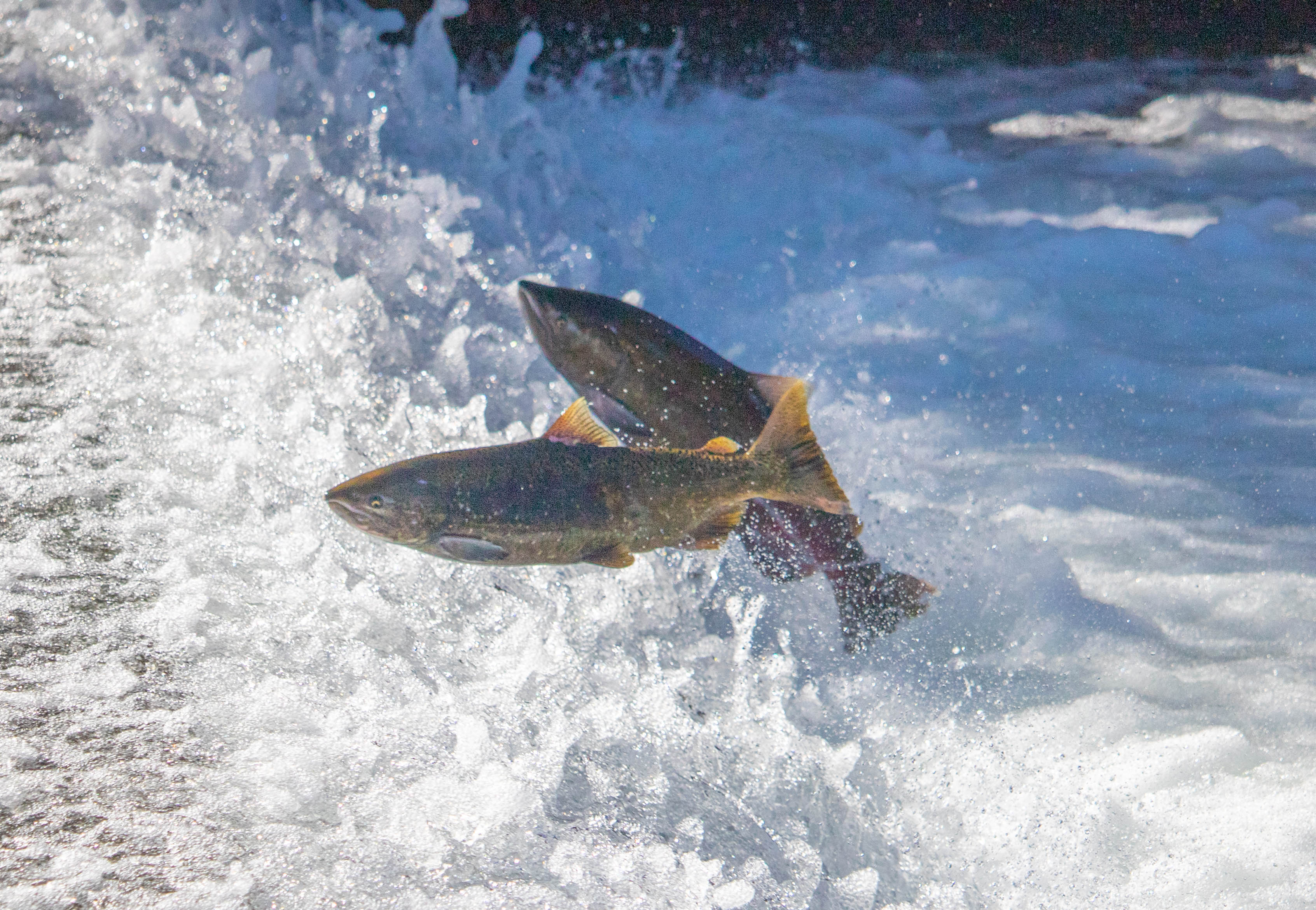
Using Science to Restore Polluted Coastal Environments
The West Coast region spans the west coast of the U.S. and includes Alaska, Washington, Oregon, Idaho, California, and the Pacific Islands. The Pacific Ocean supports rich marine ecosystems encompassing a wide range of habitats, from rivers and beaches, to estuaries, seagrass beds, kelp forests, and rocky reefs. These habitats are vital for important marine species such as salmon and steelhead; abalone; sea turtles; marine mammals such as sea otters, seals, sea lions, and whales; as well as for supporting many other ecologically, economically, and culturally important species. Specifically, Alaska waters extending from the Arctic through the Bering Strait and Aleutian Islands, to the Gulf of Alaska, are home to a remarkable abundance and diversity of life—crustaceans, fish, seals, sea lions, porpoises, whales, and more. Alaska alone produces more than half the fish caught in waters off the coast of the United States, with an average wholesale value of nearly $4.5 billion a year.
The region is home to many diverse communities of people who use these coastal resources for commercial, recreational, subsistence, and spiritual enrichment. However, densely populated urban and industrial centers can be the source of pollution from oil spills and hazardous waste discharges. Oil production, storage, transportation and vessel traffic present oil and chemical spill risks throughout the region, including in remote areas.
$94.45 Million Recovered for Restoration Over Five Years
From 2019 to 2023, NOAA and co-trustees secured 13 pollution settlements in the West Coast region worth almost $95 million. These funds are used for restoration projects that benefit the impacted communities, including underserved, Indigenous and coastal communities; the blue economy; and coastal resilience.
Pollution Settlement Highlights: 2019-2023
13 Natural Resource Damage Assessment (NRDA) settlements across four states:
- 3 oil spills, 10 hazardous waste sites
- 2 Alaska, 9 Washington, 1 Hawaii, 1 California
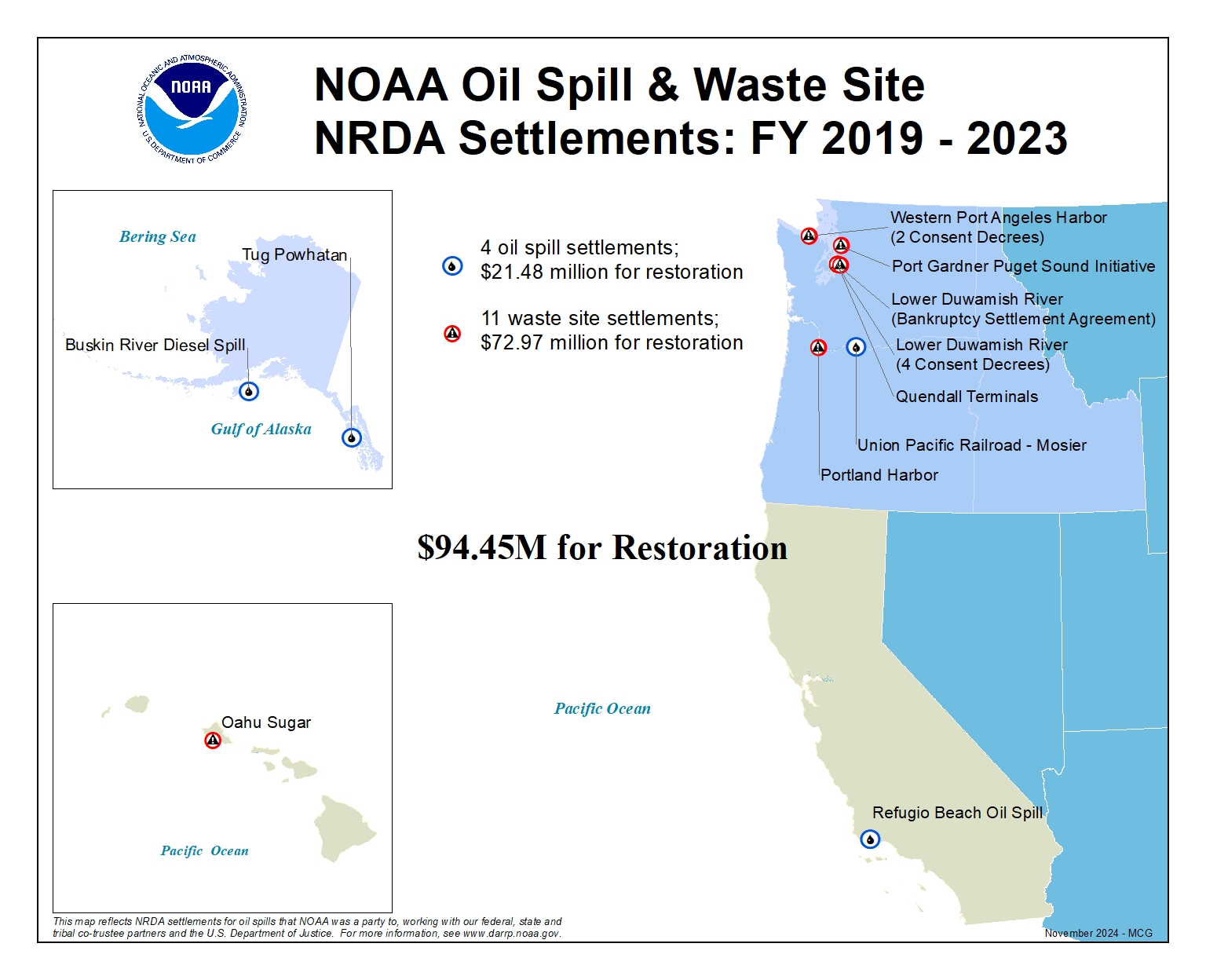
$22.3 Million Settlement Finalized to Restore Natural Resources Injured by Refugio Beach Oil Spill
Location: Refugio Beach, CA
Incident type: Oil Spill
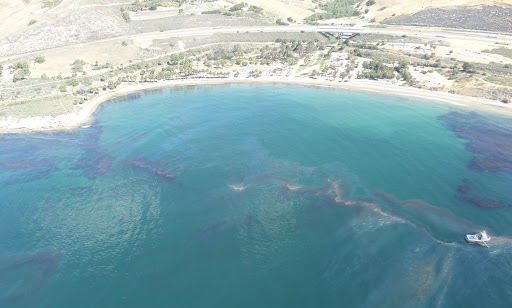
On October 14, 2020, a $22.3 million settlement was finalized to restore natural resources injured by the 2015 Refugio Beach oil spill near Santa Barbara, California. These funds resolve natural resource damage claims, restore habitats and wildlife injured by oil, and compensate the public for lost recreational opportunities. In June 2021, a final damage assessment and restoration plan was finalized, outlining restoration efforts across several areas:
- Subtidal and fish habitat
Restoration efforts will focus on red abalone populations in local Marine Protected Areas, eelgrass beds in Refugio Cove and surrounding areas, and offshore sand-dwelling kelp near Goleta Beach. The red abalone project is underway. Over 5,000 red abalone were transplanted in the fall of 2024 as part of the first phase of restoration activities. - Shoreline habitats
Restoration activities include removing the seawall at Ellwood beach, enhancing black abalone populations, and restoring degraded sand dune habitats. The Bay Foundation is implementing the highly successful dune restoration project and is in the second year of removing non-native plants and planting native plants. - Marine mammals
Efforts will include bolstering seal and sea lion stranding response and rehabilitation in Santa Barbara and Ventura counties, and expanding dolphin and whale entanglement response capacity in the Santa Barbara Channel. Funding has been provided to the Channel Islands Marine Wildlife Institute in Santa Barbara to improve their ability to respond to stranded marine mammals. - Birds
Initiatives involve removing invasive plants from brown pelican nesting colonies on Anacapa Island, reducing seabird injuries related to recreational fishing, and implementing conservation measures for western snowy plovers. Project implementors have completed two phases of the Anacapa Islands project and have seen a major decrease in the number of invasive plants on the island. - Recreational use opportunities
State Parks will administer funds to enhance camping and shore-based recreation from Gaviota State Park to El Capitan State Beach, benefiting coastal recreation in Ventura, Los Angeles, and Santa Barbara counties. Additionally, the University of California will manage funds for research, education, and outreach projects at the Coal Oil Point Reserve. The Council has allocated the recreation funds to 16 projects and implementation is ongoing.
Case background: The Refugio Beach oil spill occurred on May 19, 2015, when a pipeline owned and operated by Plains All American Pipeline ruptured near Refugio State Beach. Over 100,000 gallons of crude oil were spilled, much of which ran down a storm drain and into a ravine under the freeway, entering the ocean.
NOAA worked in partnership with the U.S. Department of the Interior’s Fish and Wildlife Service, California Department of Fish and Wildlife, the California Department of Parks and Recreation, the California State Lands Commission, and the Regents of the University of California as co-trustees. The co-trustees also worked cooperatively with the responsible party.
Learn more about the Refugio Beach oil spill case and restoration work underway.
Explore more detail on this project by visiting Refugio Beach Oil Spill: Mapping NOAA's Work from Response to Restoration. Explore the Refugio oil spill datasets.
Settlement Valued at $48 Million To Restore Natural Resources in the Lower Duwamish River
Location: Lower Duwamish River, Washington State
Incident type: Hazardous Waste Site
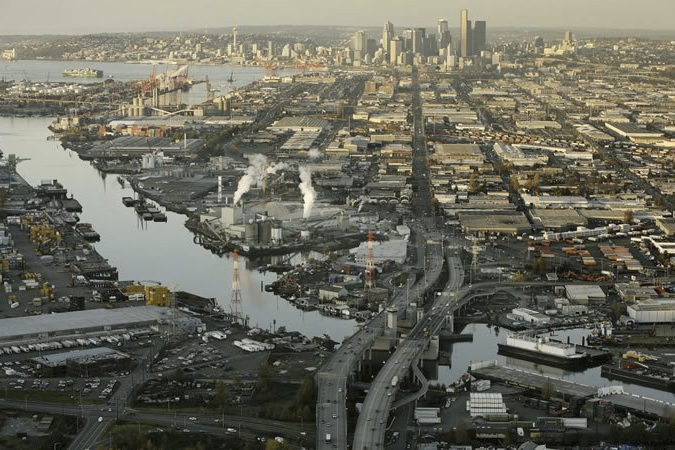
In June 2021, a $48.4 million settlement was finalized with Vigor Industrial, LLC, and Exxon Mobil Corp. to fund habitat restoration for protected salmon and other resources in the Lower Duwamish River. NOAA and trustee partners selected two restoration projects outlined in the final restoration plan. The selected projects will restore more than three acres of different estuary habitats, including marsh, channels, and tidal areas in the river.
Case background: The Lower Duwamish River was once a wide, meandering river with large areas of mudflats and marshes. By the 1940s, channelization and filling had transformed the nine-mile estuary into a seven-mile industrial waterway. This process destroyed 97 percent of the original habitat. Hazardous substances have been released since the early 1900s, resulting in injuries to fish, birds, wildlife, and their habitats.
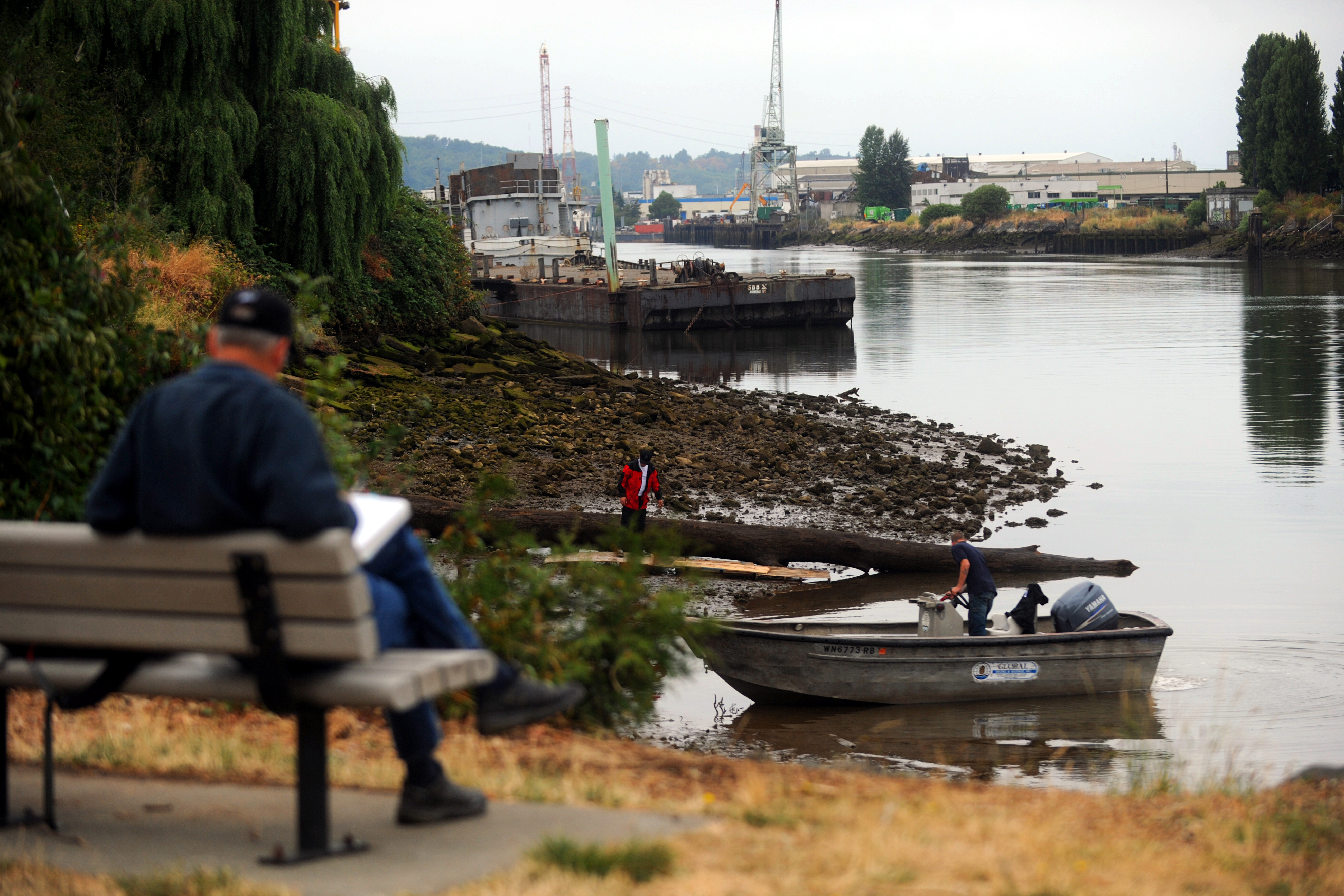
This early settlement and restoration plan are significant milestones toward recovering natural resources along the river while the damage assessment process and the selection of additional restoration projects is ongoing. Cleanup is also underway and will continue for many years.
The Elliott Bay Trustee Council, which includes NOAA, the U.S. Department of the Interior, the State of Washington, the Muckleshoot Indian Tribe, and the Suquamish Tribe, worked cooperatively to achieve this settlement on behalf of the affected public.
Learn more about the Lower Duwamish River case. Explore a visual journey of the Lower Duwamish River and the restoration work in this important urban river. Explore the Lower Duwamish River datasets.
$9.3M Settlement Finalized for Restoration at Western Port Angeles Harbor Hazardous Waste Site, Washington
Location: Western Port Angeles Harbor, Washington State
Incident type: Hazardous Waste Site
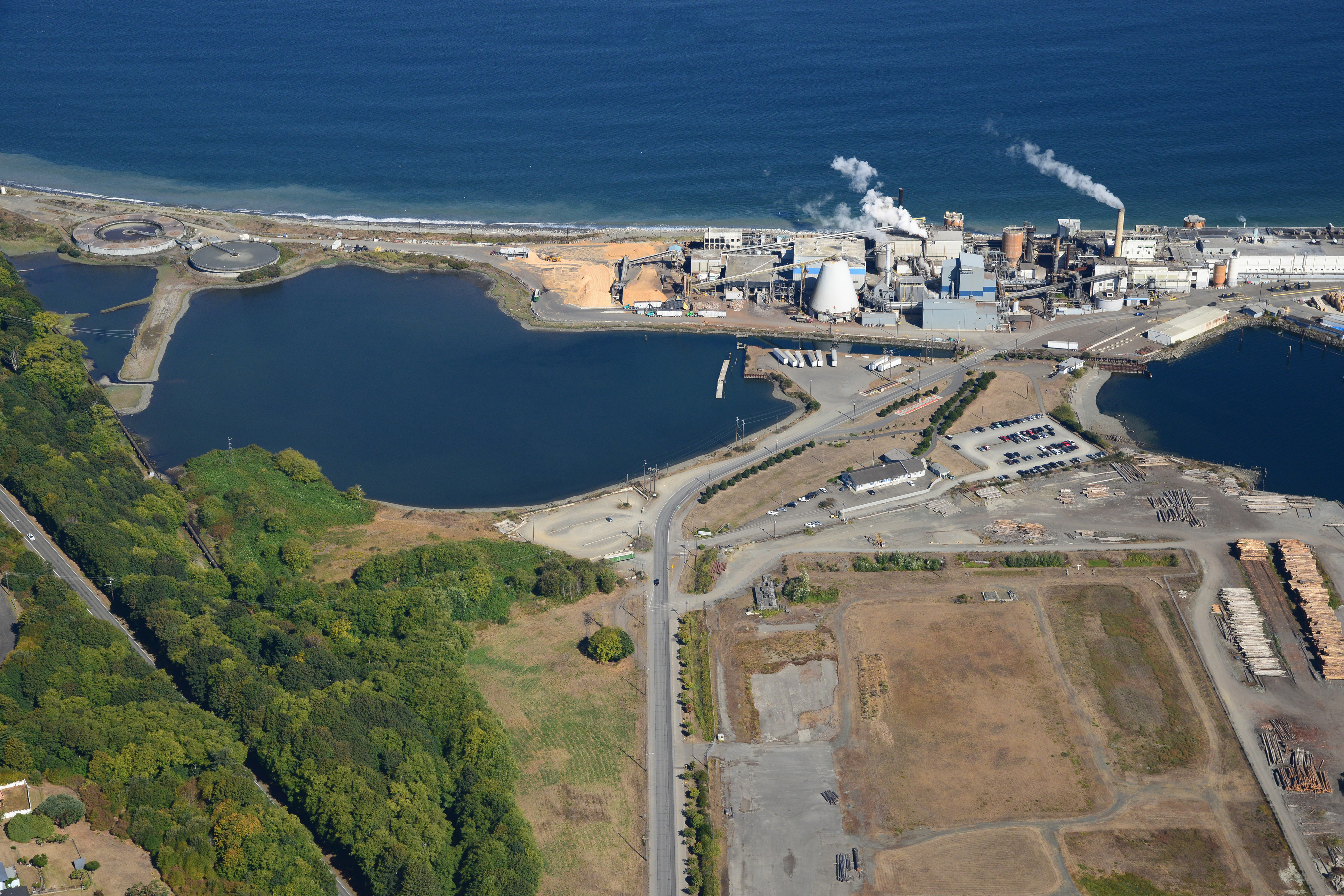
On July 13, 2021, NOAA and trustee partners reached a $9.3 million settlement with four companies, a municipality, and a port district responsible for hazardous waste pollution in Western Port Angeles Harbor, Washington. Of this, $8.5 million is funding projects to restore natural resources harmed by pollution. The final damage assessment and restoration plan includes an environmental damage assessment and an ecosystem-based program to restore affected habitats.
An eelgrass planting project at Ediz Hook in Port Angeles Harbor kicked off in the summer of 2024, expanding forage and shelter for many fish species in the harbor. Eelgrass planting is one of the key restoration activities identified in the final restoration plan for Port Angeles Harbor.
Case background: For over a century, Port Angeles Harbor has been used by various industries, including sawmills, pulp and paper production, marine transportation, and boat building. Since the early 1900s, pulp and paper mills have discharged treated and untreated waste into the harbor, leading to sediment contamination with heavy metals, dioxins, polychlorinated biphenyls (PCBs), and petrochemicals. This harbor is a crucial habitat for endangered species like Puget Sound Chinook salmon, steelhead trout, bull trout, and Hood Canal summer chum salmon, as well as various shellfish, fish, birds, and mammals.
NOAA worked in partnership with natural resource co-trustees, the Lower Elwha Klallam Tribe, Jamestown S’Klallam Tribe, Port Gamble S’Klallam Tribe, the U.S. Fish and Wildlife Service, and the Washington State Department of Ecology to reach this agreement and develop restoration plans.
Read more about the Western Port Angeles Harbor case. Explore the Washington Department of Ecology’s Western Port Angeles Harbor NRDA page, with more information about progress as projects start to move forward.
Additional Settlements in the Pacific Region Over the Past Five Years
- Amount Recovered: $170,000
- Purpose: Planning, selection, implementation, and monitoring of restoration projects.
- Amount Recovered: $1.3 million
- Purpose: Restoration of Pacific herring spawning habitat and shellfish.
- Amount Recovered: $750,000
- Purpose: Restoration (specific habitat not specified).
Port Gardner Puget Sound Initiative
- Amount Recovered: $5.45 million
- Purpose: Restoration of marsh, intertidal mudflat, floodplains, and riparian habitat to support fish and wildlife, including protected salmon.
- City of Seattle: $3.9 million for restoration of marsh, mudflat, and riparian habitats to support juvenile salmon, other fish, and migratory birds.
- Lynden, Inc.: $2 million for restoration projects benefiting juvenile salmon, other fish, migratory birds, and other wildlife.
- Kaiser Gypsum and Hanson Permanente Cement Inc. HCPI: $491,000
- Earle M. Jorgensen Company (EMJ): $1.3 million
- Alaska Marine Lines: $2 million Oahu Sugar Amount Recovered: $2.5 million Purpose: Restoration of natural resources and habitats, including plants.
- Amount Recovered: $2.5 million
- Purpose: Restoration of natural resources and habitats, including plants.
Helping Habitats and Communities Recover From Pollution
Restoration Project Highlights: 2019-2023
Since 1988, NOAA and co-trustees have secured $1.2 billion from 85 pollution settlements from 54 hazardous waste sites and 30 oil spills in the West Coast region. These funds have supported restoration efforts that enhance robust fisheries, protect endangered species, revitalize coastal habitats, and improve recreation access (explore projects by state). These restoration projects benefit the American public, including underserved, Indigenous and coastal communities. They also enhance coastal resilience and the sustainable use of marine resources. Below are highlighted examples of restoration after pollution from the past five years.
More Than 30 Acres of New Reef Habitat Built Off the Southern California Coast
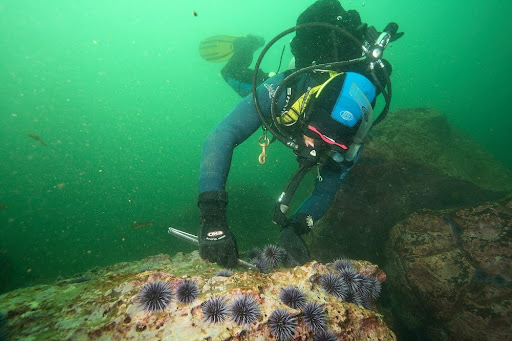
NOAA and its partners constructed a new rocky reef habitat to create healthy homes for fish and marine life, marking one of the final efforts to restore Southern California's ecosystem impacted by chemical pollution at the Montrose Superfund site. This is one of many Southern California projects restoring wetlands, reefs, and other habitats polluted by dichloro-diphenyl-trichloroethane (DDT) and PCBs. NOAA and partners restored 32 acres of reef habitat where old reefs were buried in underwater landslides and sediment was contaminated with DDT and other toxins.
The reefs support a diversity of fish and marine life and promote kelp forest growth. The Rocky Reef Project restored approximately 40 acres of subtidal rocky reef habitat to compensate for fish habitat impacted by pollution. The project involved the placement of 70,300 tons of quarry rock on 40 acres of ocean bottom near the city of Rancho Palos Verdes. This area once supported a low-relief rocky reef habitat impaired by coastal landslides that buried the reef. The constructed reef is higher relief, resistant to burial, and supports a high diversity of marine resources.
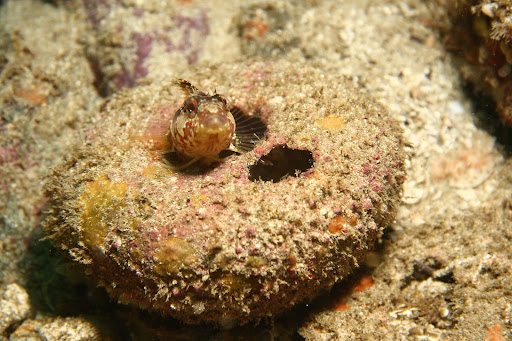
The Palos Verdes project was funded by a $64 million settlement with the Montrose Chemical Corporation and other industrial companies in 2001. This is the last of almost 20 restoration projects that have been completed for the Montrose settlement.
Highlights:
- Reef construction was completed in 2020; monitoring is ongoing
- Placed more than 70,000 tons of quarry rock over 40 acres of the ocean bottom
- Leveraged strong regional partnerships
- Spurring additional rocky reef project planning in the region
Read more about the Palos Verdes Reef Restoration Project. Watch the video: Rebirth of a Reef: Palos Verdes Reef Restoration Project.
Reconnected Estuary Island Becomes Vital Nursery for Puget Sound Chinook and Other Salmonids
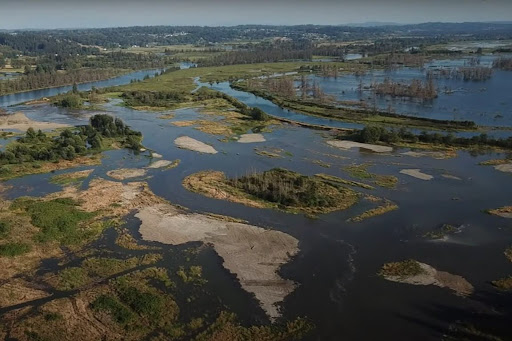
The Blue Heron Slough joins a series of restoration projects restoring over 1,500 acres of Snohomish Estuary wetlands–the largest estuary restoration effort in Puget Sound. It’s intended to protect habitat from future damage surrounding North Ebey Island, between the cities of Everett and Marysville, north of Seattle, Washington. Workers developed a mosaic of channels, marshes, mudflats, and riparian areas to resemble those found on natural estuary islands. Now reconnected to the Snohomish River, this new estuary island can serve as a home river nursery for nine species of salmonids, including the threatened Puget Sound Chinook salmon (Oncorhynchus tshawytscha), the preferred food of Southern Resident killer whales. If habitat loss is not restored, both species face the risk of extinction.
This project is a milestone for both the Port Gardner NRDA case and for Snohomish River salmon recovery. Federal, state, and tribal efforts to secure restoration from the release of hazardous substances resulted in two settlements that led to the project’s construction. The completion of the Blue Heron Slough also serves as a model for how natural resource managers can make the public whole through effective restoration projects that are aligned with local restoration planning.
Highlights:
- 353 acres of wetland complex habitat, supports nine species of salmon
- Co-trustees include the Tulalip and Suquamish tribes; example of restoration banking approach
- Restoration possible via the creation of a conservation bank where trustees purchased credits and leveraged other funding to get a larger project than would have otherwise been possible, despite dense development, highly altered landscape
Read more about the Blue Heron Slough Restoration l project. Watch the video: Blue Heron Slough Restoration Unveiling.
Millionth Spiny Superhero Released to Devour Hawaiʻi's Coral-Smothering Algae
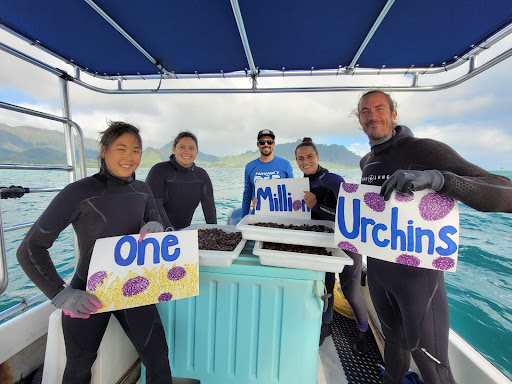
One million sea urchins have been deployed through the Hawaiʻi Division of Aquatic Resources’ work in partnership with NOAA to restore corals after the M/V Cape Flattery grounded on an Oʻahu reef.
The millionth sea urchin is now working with its companions to help struggling corals in Hawaiʻi. Since 2011, the State of Hawaiʻi Division of Aquatic Resources has grown and released urchins in Kaneohe Bay in partnership with NOAA. The urchins eat invasive algae threatening corals and their ecosystems. This prickly partnership began after M/V Cape Flattery grounded on a shallow reef off of Barbers Point on Oʻahu in 2005. Damage from the ship’s removal affected almost 20 acres of reef, scraping away approximately one million corals.
Highlights:
- One million Native Hawaiian collector urchins have been outplanted
- 230 acres of coral cleared of invasive algae in Kāneʻohe Bay
- Annual urchin production has increased due to hatchery advancements
Read more about the conservation of Hawaiʻi corals with native sea urchins project.
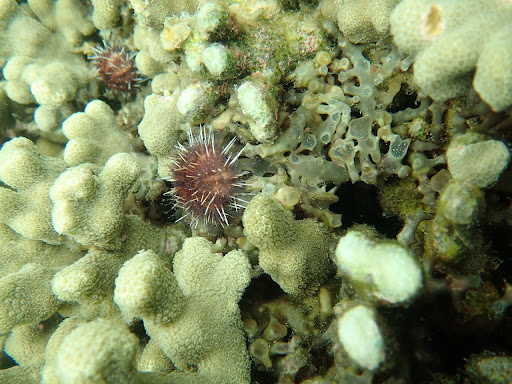
Abalone Restoration Boost Dwindling Populations in Southern California
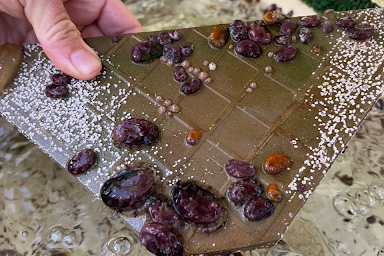
NOAA and its partners identified the Gaviota Coast Abalone Restoration Project in the final restoration plan of the 2015 Refugio Beach oil spill settlement as one of the preferred projects to compensate for subtidal injuries. This project addressed the critical abalone shortage in two reef areas within State Marine Conservation Areas (SMCAs) that were directly affected by the oil spill. As avid grazers, red abalone and other abalone species play an important role in structuring kelp forest habitats. Restoring abalone to the SMCAs will in turn restore ecosystem function and increase resilience to future impacts.
Phase One of the project, currently in progress, involves gathering wild broodstock red abalone, producing juvenile red abalone in captivity, selecting and preparing restoration sites, and outplanting a total of 5,000 red abalone. Phase One will build the foundation for Phase Two, which will include biannual outplantings of 5,000 red abalone within five years—with the goal of 40,000 outplanted red abalone.
Highlights:
- The project’s 10-year goal is to plant 40,000 red abalone to create a self-sustaining population at Naples and Isla Vista reefs in Santa Barbara County
- Phase One of the project includes collecting wild broodstock, producing juvenile red abalone in captivity, selecting restoration sites, and outplanting 5,000 individuals
- The first outplanting of 5,000 individuals occurred in August 2024
Read more about the abalone restoration project in Southern California.
Fish Passage in the Kenai Peninsula
A large-scale restoration project is taking place on Dena’ina land with the collaboration of the Kenaitze Tribe, whose cultural values emphasize the significance of fishing for unity and tradition. NOAA's efforts to address the decline in Chinook salmon populations on the Kenai Peninsula focus on enhancing the resiliency of local ecosystems against climate change by promoting genetic diversity and restoring fish passage. With support from U.S. Fish and Wildlife Service, Alaska Department of Fish and Game, and $8 million in funding from the Exxon Valdez oil spill, the project prioritized replacing culverts, or structures that channel water, that blocked fish passage. Four culverts were identified for replacement, opening up 115 miles of stream and improving both fish populations and the coastal communities that rely on fishing for subsistence, recreation, and commerce.
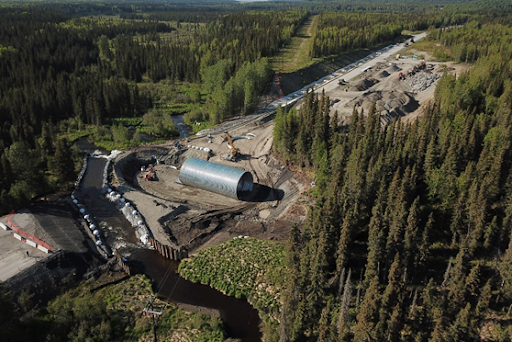
One key project in the restoration effort was the Crooked Creek project, completed in 2019. The culvert replacement on this 46-mile-long, nonglacial stream restored access to 33 miles of habitat for Chinook and coho salmon, two important species for the Kasilof River sport fisheries. The restoration not only benefits salmon populations but also enhances recreational areas, such as Johnson Lake State Recreation Site, which sees significant visitation. This project plays a critical role in supporting salmonid production in the watershed, providing year-round access to important habitat areas and mitigating thermal stress in the river, which is another emerging threat to juvenile salmon.
Highlights:
- Replaced four culverts, opening 115 miles of fish passage for Chinook and other salmon species
- Crooked Creek project restored 33 miles of habitat for Chinook and coho salmon, crucial for sport fisheries
Read about the barrier removal project supporting fish passage in Alaska.

